Are you looking to spice up your healthy meals during the colder months? Look no further than the incredible world of squash! With a variety of shapes, colors, flavors, and textures, squash adds both versatility and nutrition to your menu. Immerse yourself in the wonders of winter squash, discover the best varieties, and let your culinary creativity flourish with delicious squash recipes. Get started with our handpicked selection of the top seven types of squash below. Your taste buds will thank you!
1. Butternut Squash
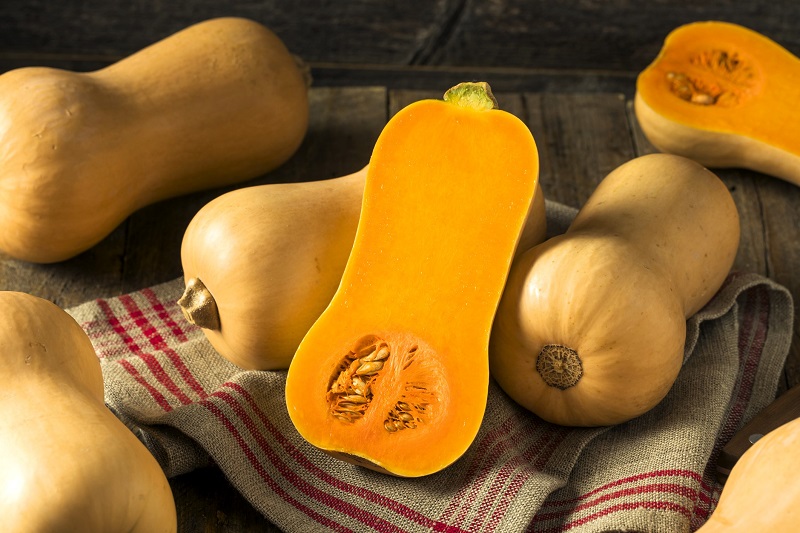
A tube-shaped squash with a bulbous end, butternut has smooth, buff-colored skin. The fine-textured, deep-orange flesh tastes similar to sweet potatoes, though some liken the flavor to butterscotch.
Nutrisystem Category: SmartCarb
Nutrition Highlights: A one-cup serving has 63 calories, 2.8 grams of fiber, no fat and negligible amounts of sodium, but it gives you 14 percent of your RDA for potassium and a whopping 297 percent of your daily vitamin A supply.
Try: Because of its smooth and non-stringy texture, butternut squash is ideal for soups. Many bakers also prefer it over pumpkin for making pies. Try our Creamy Butternut Squash Soup recipe that’s perfect for cool weather, then check out our other healthy butternut squash recipes.
2. Acorn Squash
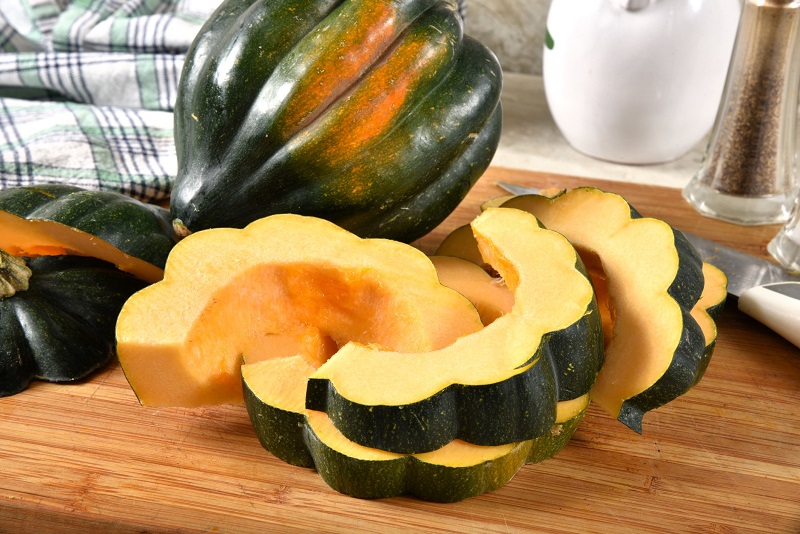
As the name suggests, this squash is shaped like an acorn, with distinct ribs on its hard, black-green skin. The golden-yellow flesh inside is sweet with a hint of nuttiness and it is a bit fibrous. Acorn squash tend to be small–mostly between 1 and 3 pounds–so they are easy to cut in half and serve inside their skin.
Nutrisystem Category: SmartCarb
Nutrition Highlights: You get 56 calories, 2.1 grams of fiber, and 25 percent of your RDA for vitamin C in a one-cup serving of acorn squash.
Try: Slow baking brings out the natural sweetness of acorn squash. Try it out in this Stuffed Acorn Squash recipe.
3. Spaghetti Squash
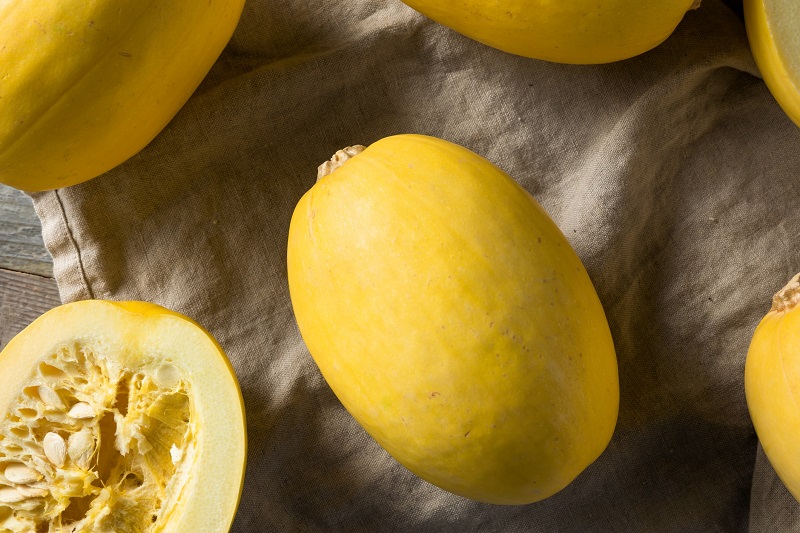
This variety gets its name because when the cooked flesh is scraped from the skin with a fork it comes out in yellow strands that resemble pasta. The whole squash has a watermelon-like shape (though they typically weigh less than 5 pounds) and golden-yellow skin. The flavor is very mild.
Nutrisystem Category: Vegetables
Nutrition Highlights: With just 42 calories per one-cup serving, 2.2 grams of fiber and 10 grams of carbohydrates, spaghetti squash is a better choice than even the healthiest type of pasta. It also gives you 181 milligrams of potassium and almost no sodium.
Try: You can swap out regular noodles for baked spaghetti squash in many different recipes. We use it to create this low-carb version of the trendy Baked Feta Pasta!
4. Delicata Squash
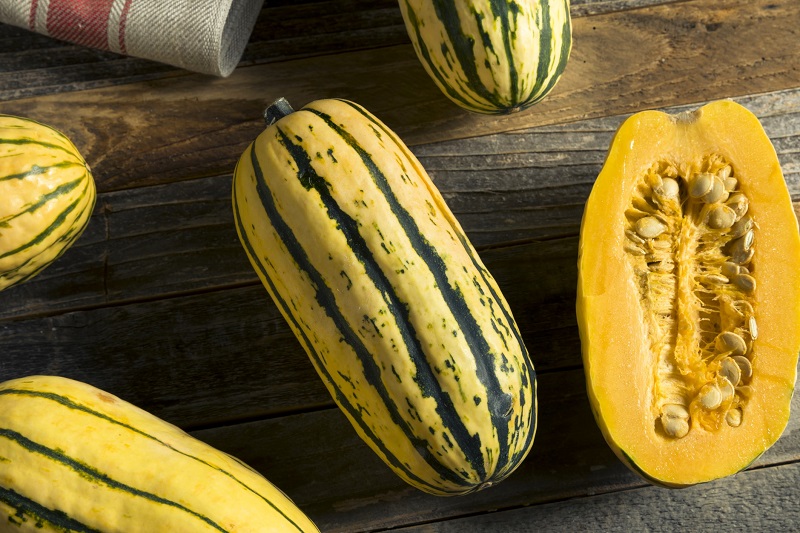
The green-and-white-striped delicata squash may not be as familiar to many people as the first three on this list, but its popularity is rising rapidly because it is so tasty and easy to prepare. The creamy flesh inside tastes like corn, but even sweeter. Delicata has a thinner, more tender skin than other winter squashes; in fact, you can eat the skin rather than remove it.
Nutrisystem Category: SmartCarb
Nutrition Highlights: In one cup of Delicata squash, you get 82 calories, 1.5 grams of fiber, 52 percent of your RDA for vitamin C and 457 percent of the RDA for vitamin A.
Try: Cut delicata squash in half and then into C-shaped slices. Delicata takes only 15 to 20 minutes to bake and only needs a little salt and pepper to highlight its flavors. Check out this Roasted Delicata Squash Salad or try something fancier with our Vegetarian Stuffed Delicata Squash recipe.
5. Hubbard Squash
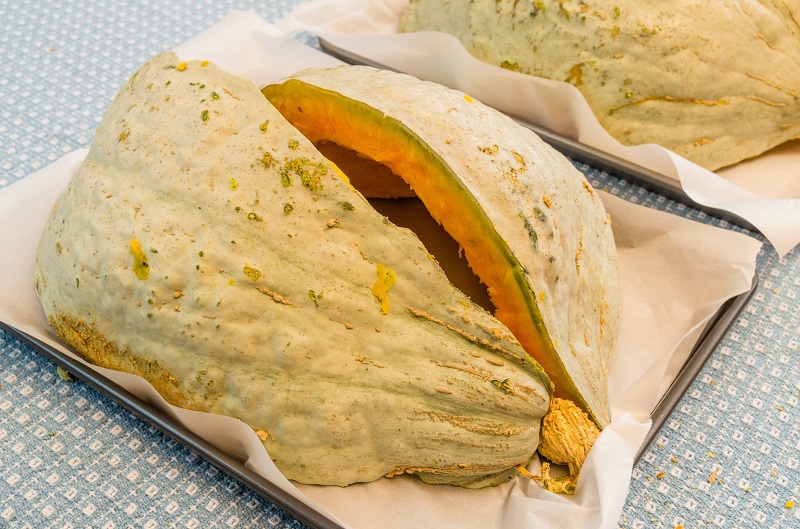
One of the largest varieties, hubbard squash typically weigh 8 to 20 pounds. Their roundish shape and nubbly skin resembles that of their close cousin, pumpkins, though hubbard’s outer color ranges from orange to grayish blue. Beneath the hard skin, the yellow flesh is sweet, dry and fine-textured.
Nutrisystem Category: SmartCarb
Nutrition Highlights: Hubbards have comparatively high sugar content, which pushes up the calorie count in a one-cup serving to 102. But it comes with 10 grams of fiber, 734 milligrams of potassium, and no fat.
Try: You can bake hubbard squash whole–just use a knife to pierce the skin in a few places to allow air to escape. For the best flavor, roast halves of squash, cut side up in a shallow pan of water for about 1 hour.
6. Kabocha Squash
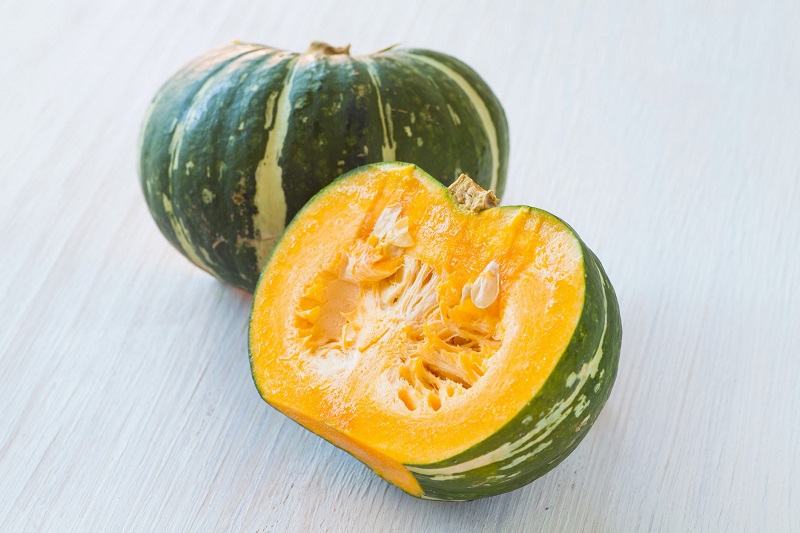
Also known as Hokkaido or Japanese Pumpkin, kabocha has green, bluish-gray, or deep orange skin. The deep yellow or pale orange flesh inside has a lightly sweet flavor and a dry, flaky texture. Kabocha squash tend to be small (most are 2 to 3 pounds), so they are often used as a substitute for pumpkins, when a smaller squash would be easier to cook.
Nutrisystem Category: SmartCarb
Nutrition Highlights: One cup of kabocha squash has 53 calories, 3 grams of fiber and 8 grams of total carbohydrates. Because it’s so low in calories, you can enjoy two cups as a SmartCarb choice on Nutrisystem.
Try: Roasted kabocha cut into cubes adds a hint of sweetness to salads or mixed vegetable medleys. Adding pureed kabocha helps make stews and soups thicker.
7. Calabaza Squash

People with Caribbean heritage will recognize the calabaza, which is also called West Indian pumpkin because of its shape and color. The very hard skin may be tan, green, or reddish orange. The golden orange flesh is sweeter and juicier than most other winter squashes and the texture is smooth, like the butternut.
Nutrisystem Category: SmartCarb
Nutrition Highlights: You get 76 calories, 5.7 grams of fiber, 6.8 grams of sugar, 33 percent of your RDA for vitamin C, and almost 300 percent of your daily vitamin A needs from a one-cup serving.
Try: Chunks of steamed calabaza are a tender addition to rice and salads. Roasted calabaza seeds are also tasty and loaded with nutrients.
The post 7 Types of Squash to Try This Season appeared first on The Leaf.
Comments
Post a Comment